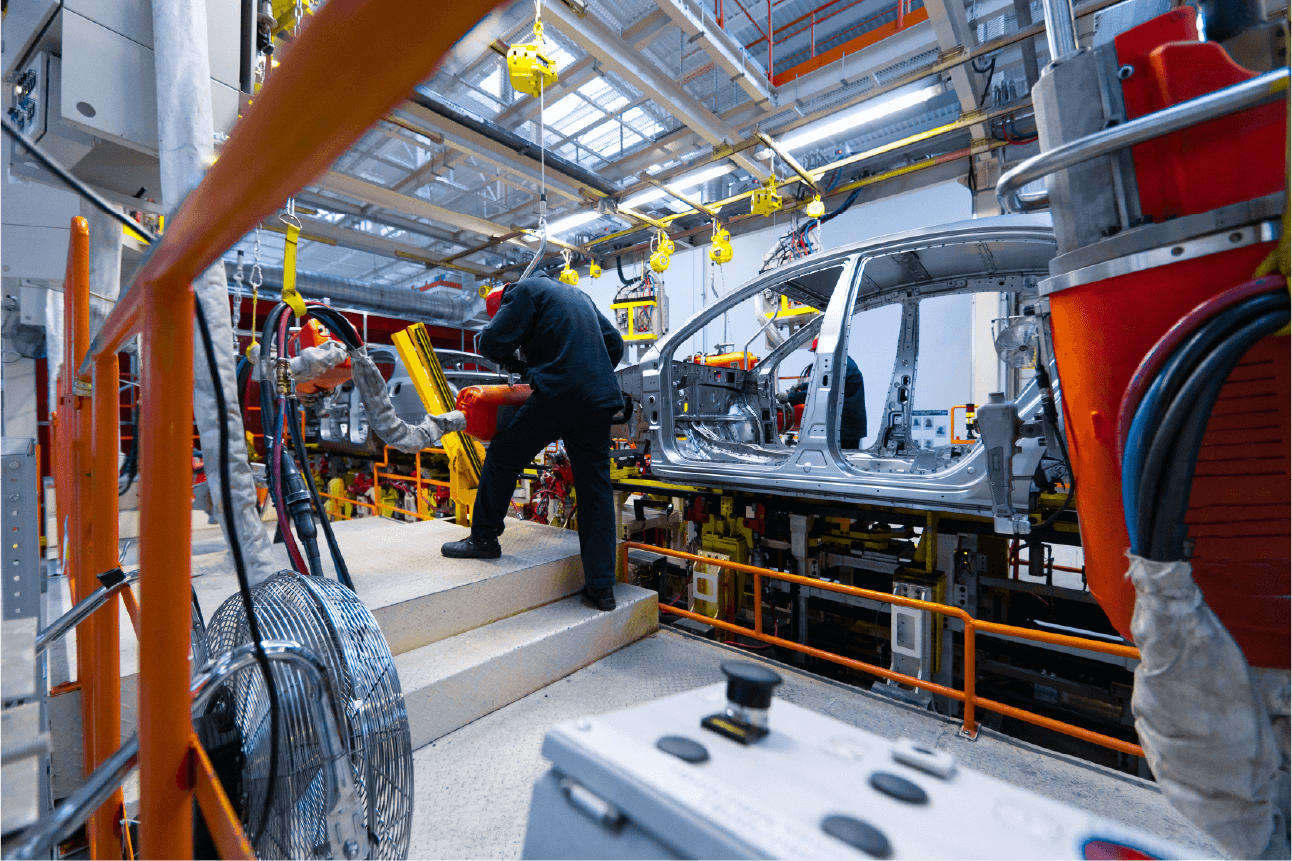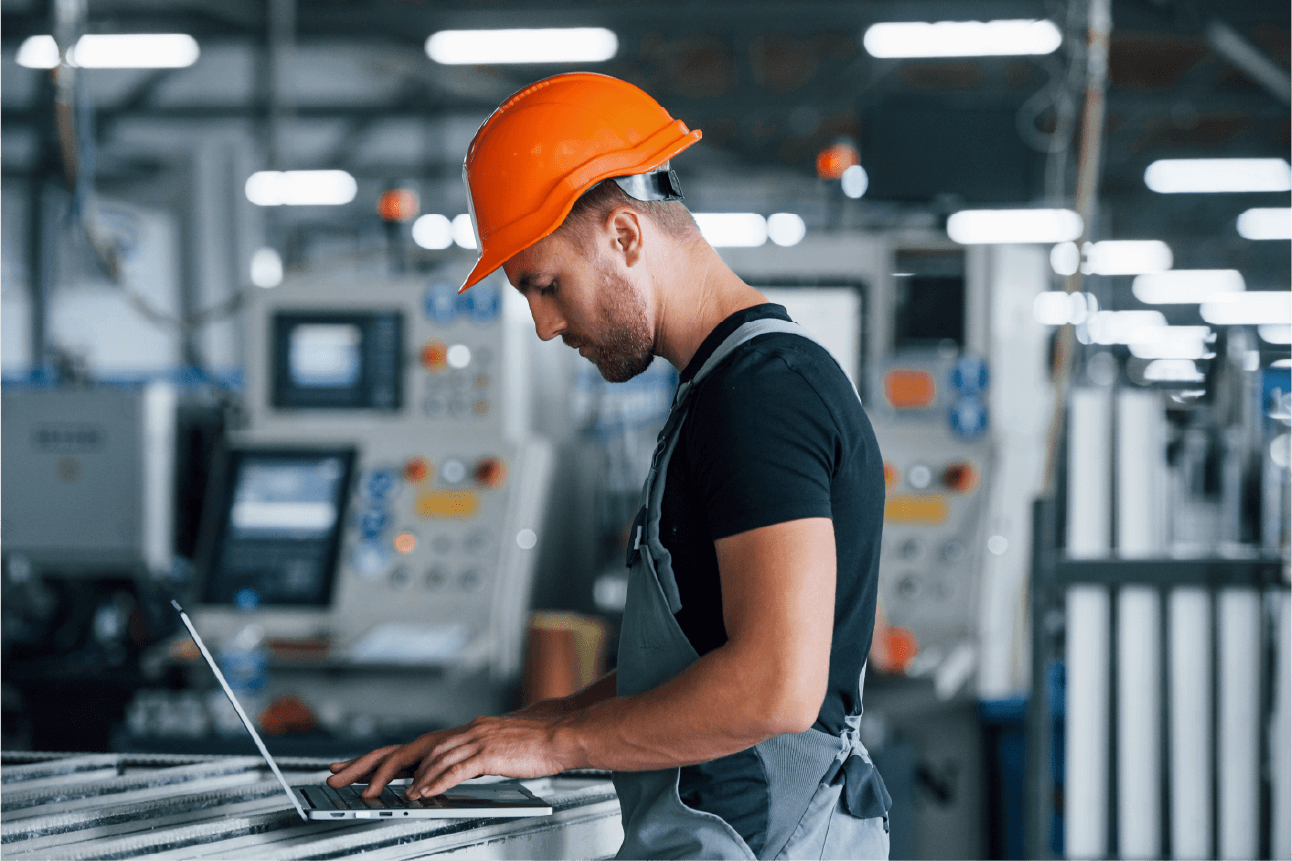What’s that one thing slowing down the production line at its core? It’s the inefficiencies. The real complications arise when manufacturers must balance speed, cost-effectiveness, and quality, all at once. On the other hand, the momentum behind AI adoption is undeniable. Can AI fill the gaps in the manufacturing challenge?
It's no surprise that the manufacturing industry is eagerly embracing AI across various facets of its operations. From production processes and monitoring systems to fully autonomous solutions, AI is transforming the sector. With each passing day, AI emerges as a game-changing innovation, particularly in precision-driven quality control.
AI-powered visual inspection systems can detect even the most subtle defects with remarkable accuracy, ensuring optimum quality. For instance, in the automotive industry, AI-powered assembly verification has been shown to reduce recalls, improve safety, and optimize production efficiency.
Loopr AI's advanced visual inspection solutions are enabling manufacturers to shift from reactive problem-solving to a proactive approach. By leveraging its AI-powered system, manufacturers can inspect defects in real time, providing invaluable insights into defective patterns and assembly verifications. This data-driven approach allows for continuous improvement and strategic decision-making.
To fully understand the transformative role of AI in modern manufacturing, let's delve deeper into the most pressing manufacturing challenges and explore how AI is directly addressing these issues.
Manufacturing Challenge #1: Lack of Real-Time Defect Detection in Production
Impact: Manufacturing processes run at high speed, especially when the production capacity is over 1000 units per hour. The human inspectors are tasked with the same quality check job throughout the day. However, the repetitive nature of this can lead to lapses in attention or even the smallest defects can be overlooked after performing the same checks for hours. This poses the risk of costly recalls or worse, a faulty product reaching the market. For reference, a fiber misalignment in a carbon composite turbine blade can compromise its entire structural integrity.
AI Solution: Advanced machine vision technology comes with the ability to analyze a high volume of components per second, identifying anomalies missed by the human eye. The AI-based inspection software traces any defect, triggers an alert, or sends a command to the PLC to take corrective action. This is beneficial in high-volume manufacturing environments, where downtime is non-affordable.
Loopr AI’s Role: Loopr AI visual inspection software can be seamlessly integrated into the existing production line. Its ability to run autonomously or in co-pilot mode can help to detect any anomalies in real time. This manufacturing challenge is effectively tackled by LooprIQ solution, which performs comprehensive inspections to identify even the most minute defects, ensuring products meet strict quality standards.
Manufacturing Challenge #2: Quality Control & Defect Detection
Impact: Ensuring top-most product quality has always been at the core of manufacturing. Human inspection is often accompanied by subjective interpretations. Even the most sophisticated production lines can encounter challenges when defects are overlooked or assembly verification is improperly done, often leading to rework when the problem is discovered downstream. As a result, this manufacturing challenge can make it difficult to maintain the highest quality demanded by the industry.
AI Solution: AI inspection software has changed these dynamics by automating defect detection in the most objective and consistent manner. Machine Vision AI models can continuously improve, becoming more adept at identifying defects, deviations, and imperfections, complementing human expertise with unparalleled accuracy.
Loopr AI’s Role: Loopr AI takes defect detection a step further by offering 100% inspection of all parts. Whether raw materials, in-process components, or final products, our machine vision capabilities are customized to identify the specific defect types. With the permanent database of inspection records, it becomes much easier to trace the root cause before it is widespread.
Manufacturing Challenge #3: Assembly Errors in Manufacturing Processes
Impact: The assembly of high-mix parts is a highly intricate process, where each part is made up of multiple components. Even a small oversight in missing just one component can potentially lead to major issues. If the errors are caught later on, then they need to be disassembled or reassembled. This can be an overlooked yet the most expensive manufacturing challenge.
AI Solution: AI-driven verification software is the best way to speed up the assembly process. This software can efficiently compare ongoing assemblies with a bill-of-material, product specification, or benchmark image. Not to forget how manufacturers rely on it to identify any discrepancies, such as missing components, incorrect placements, or alignment issues.
Loopr AI’s Role: LooprIQ is an advanced solution for any assembly errors. Using deep learning models ensures that each component is correctly placed, aligned, and fully assembled. It can instantly flag an issue before it moves further down the production line. For instance, Loopr AI could verify whether the critical steering components are properly installed in each vehicle, eliminating costly misassembles before they escalate into a major issue.
Manufacturing Challenge #4: Labour Shortages & Workforce Productivity
Impact: Labour shortages are a much-faced issue in the manufacturing sectors. Experienced workers are retiring, leaving a gap in technical expertise. New hires lack the necessary training, slowing down production. On the other hand, repetitive tasks can hamper productivity. All these will directly impact the production process, leading to increased operational costs.
AI Solution: AI-powered automation and cobots can effectively bridge the labor gap while enhancing productivity. AI can now handle routine, precision-based tasks, allowing human workers to focus more on high-value decision-making. Collaborative robots now work alongside employees to ensure the production and quality control process is efficient.
Loopr AI’s Role: Loopr AI’s inspection solution works in both fully automated and co-pilot mode. In co-pilot mode, Loopr AI assists inspectors by flagging ambiguous defects for review, ensuring that critical decisions are made hand-in-hand with human expertise. The best part is that we also train the workforce to effectively operate with AI-driven inspection solutions and overcome this manufacturing challenge.
Manufacturing Challenge #5: Energy Consumption & Sustainability
Impact: Massive energy consumption is not only a cost issue, but also a sustainability concern. Manufacturers have a responsibility to reduce their carbon footprint and optimize energy consumption as part of their commitment. However, in energy-intensive industries, such as automotive, steel production, or semiconductor manufacturing, achieving these goals can be a challenging task.
AI Solution: AI-based solutions can help analyze where inefficiencies occur in real time. AI can optimize production process efficiency by fine-tuning the parameters, minimizing energy waste, and ensuring that there’s no scope for defects or inefficiencies.
Loopr AI’s Role: LooprIQ enables compliance with global regulatory standards, ensuring it also aligns with sustainability initiatives to reduce rework and scrap for manufacturers. Post verification process the data collected by Loopr AI can be utilized to analyze historical defect patterns and identify the root cause for failures. Thereby, Loopr AI helps reduce scrap rates and material waste by indirectly enabling the reduction of unnecessary energy consumption.
Conclusion
Manufacturing in the 21st century is defined by complexity and competition. If traditional methods don’t suffice in such an environment, it’s time to switch to something more sophisticated and precise. AI comes with the ability to address the manufacturing challenges that arise in high-volume production journeys.
Loopr's visual inspection solution can address manufacturing challenges head-on, offering real-time anomaly detection, automated defect classification, and the ability to seamlessly integrate with existing production lines. By optimizing production processes, reducing human error, and enabling continuous learning, Loopr is not just solving the issues, but also creating a new standard of excellence.


%201.svg)

.svg)



.png)

%202.jpeg)
